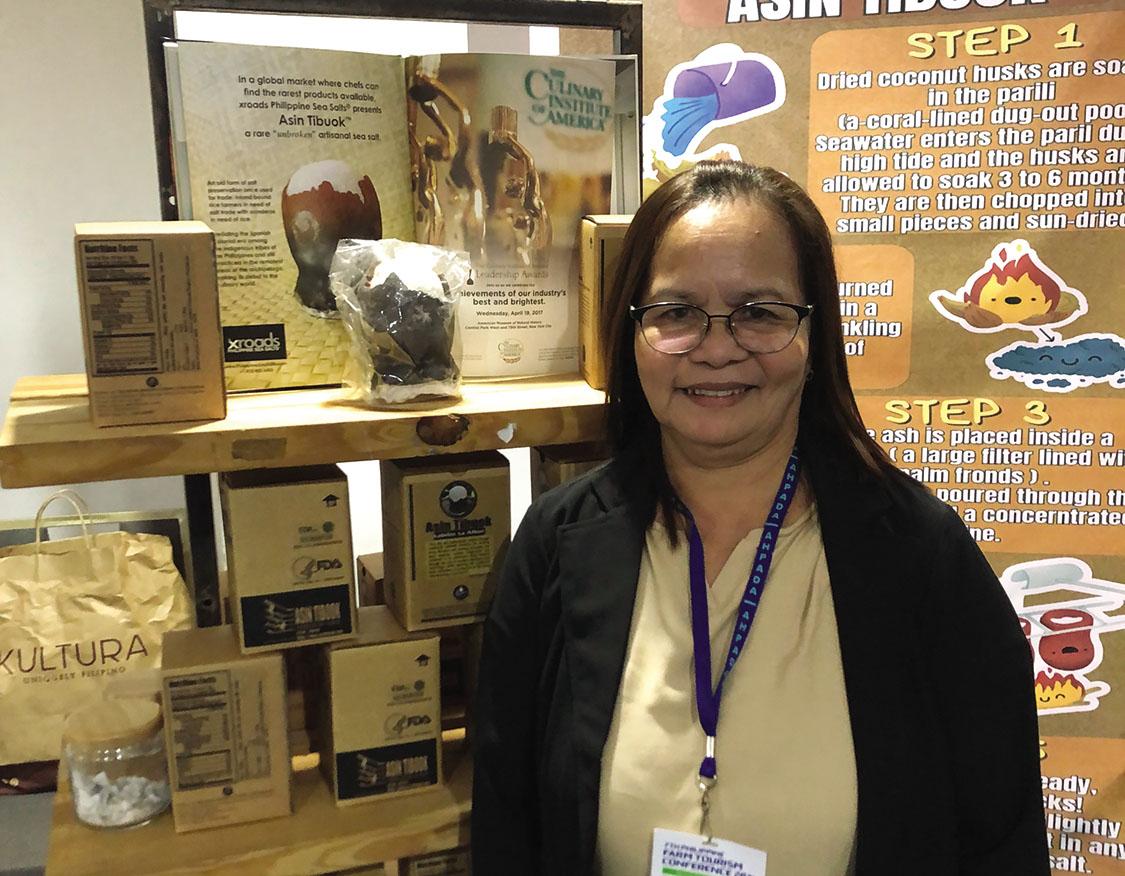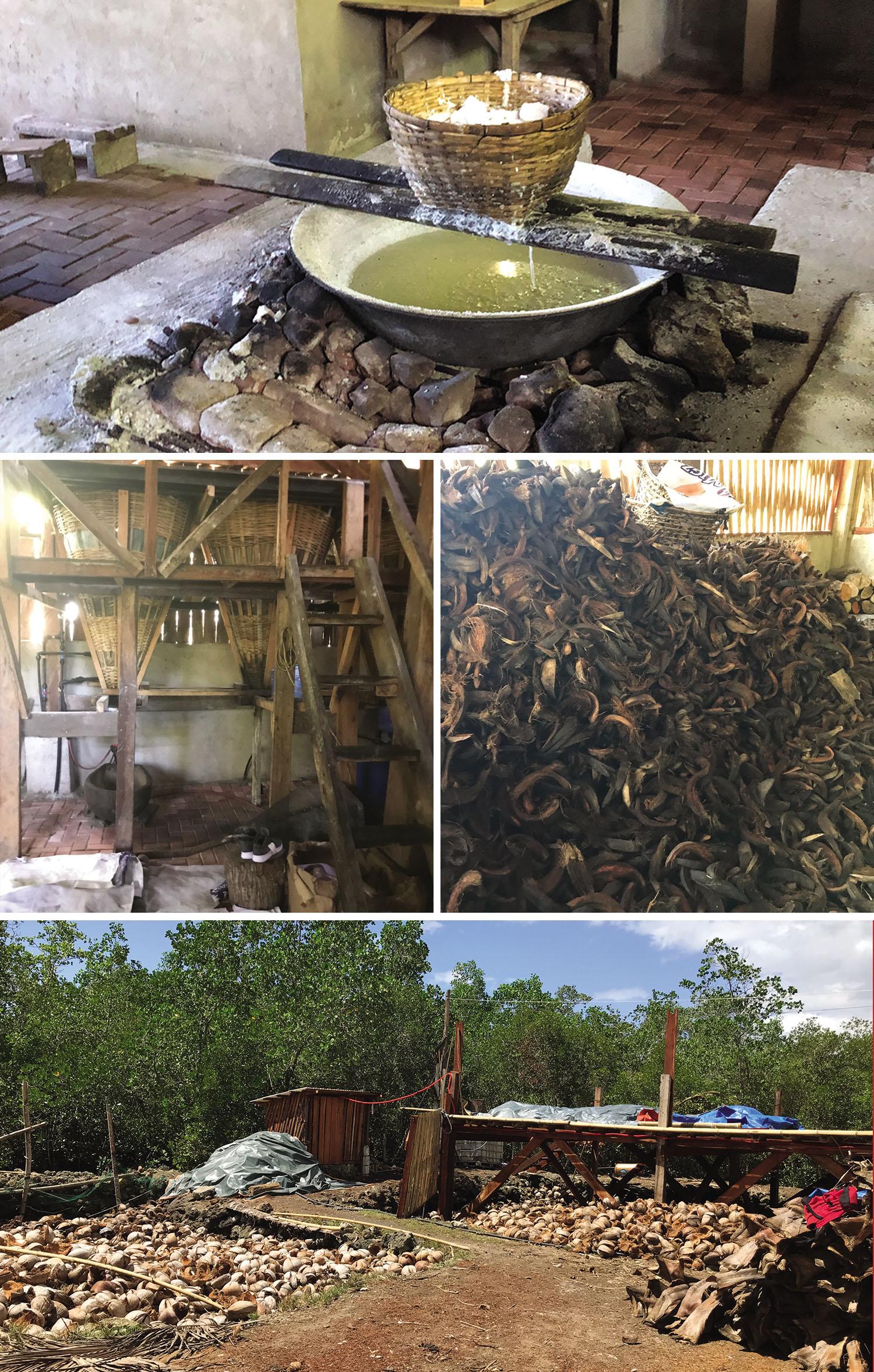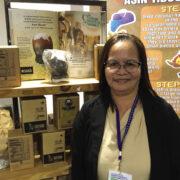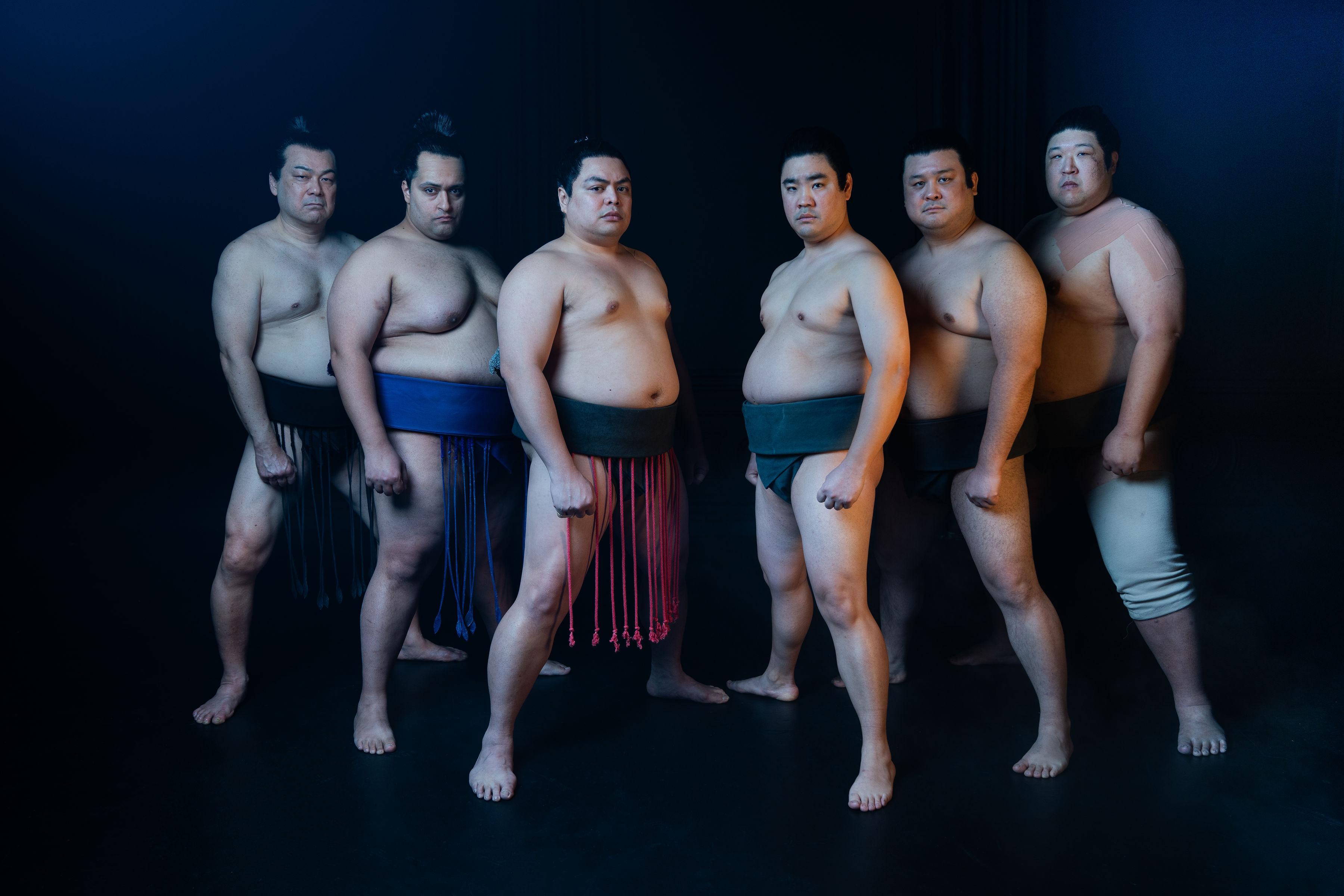
IN the quiet town of Alburquerque, Bohol, 11 miles from the nearby capital of Tagbilaran City, a cherished tradition lives on. Here, amidst the soothing sounds of the sea and the salty air, artisans like Veronica Manongas-Salupan continue the age-old practice of making “asin tibuok,” or unbroken salt, treasured for its pureness and handcrafted excellence.
Veronica, a third-generation “asindero” from Alburquerque, represents one of the few remaining families in the town dedicated to the meticulous art of producing asin tibuok. Reflecting on the recent unexpected surge in popularity of their craft, she humbly acknowledges the foresight of their ancestors in laying the foundation for this enduring legacy which they hope to continue at Tan Inong Asin Tibuok Kabilin.
Gratitude fills the hearts of the Manongas family as they extend appreciation to their steadfast supporters, including Filipino American businesswoman Lennie DiCarlo, whose visionary efforts have brought the flavors of asin tibuok to the United States since 2017. With approximately 3,000 pieces bound for the U.S. this quarter alone, the journey of asin tibuok transcends borders, captivating palates and igniting culinary imaginations.
From the kitchens of renowned chefs to the social media feeds of influencers, asin tibuok has garnered acclaim, earning accolades from esteemed institutions like the Culinary Institute of America. Veronica and her family’s dedication to preserving the pre-colonial tradition has not gone unnoticed, culminating in her recognition as one of the esteemed winners of the 2024 Lakbay Bukid Awards, honoring her role in farm tourism development.
“We hope to maintain the quality of the asin tibuok and that people continue to support and use it,” Salupan told the Asian Journal. “We will continue to do this to honor the legacy of our ancestors who gave it to us.”
The revival of asin tibuok stands as a testament to the enduring spirit of heritage preservation. In an era where artisanal craftsmanship is celebrated as the pinnacle of culinary excellence, this rare sea salt holds a special place. Beyond its culinary allure, asin tibuok embodies the rich tapestry of Bohol’s cultural heritage, drawing visitors to the humble shores of Albur.

AJPress Photos by Momar G. Visaya
The actual process is quite labor-intensive as Tan Inong workers showed us when we visited Albur recently as part of the Winter Escapade Tour of the Department of Foreign Affairs and Department of Tourism.

First, the coconut husks are soaked for 3 to 4 months to absorb the salinity of the seawater. Then, they are chopped, dried, and burned to become gasang, or ash. Seawater is then filtered through the gasang to extract the salt, resulting in tasik, which is boiled in handmade clay pots for up to eight hours until it forms the recognizable egg-shaped mass of salt.
Resurgence
Before the revival of asin tibuok, the industry lacked financial viability. Artisans primarily engaged in salt-making to exchange for rice grains with farmers. However, in recent times, this dynamic has shifted. Even affluent individuals in the province have begun purchasing their asin, which now commands prices starting at around P800 pesos.
Adversity struck with the passage of Republic Act No. 8172 in 1995, mandating iodine supplementation in all manufactured salt in the country. The law wanted to eliminate iodine deficiency disorders by mandating all salt producers and manufacturers to iodize their products. Coupled with the toll on their father’s health, salt production at Tan Inong’s halted, casting a shadow over their endeavors.
Veronica’s brother, Fr. Cris, embarked on the ambitious task of reviving the art of asin-making in 2010, facing resistance from fellow artisans daunted by the laborious process and uncertain returns. Undeterred, he pressed forward, securing a loan to breathe life into their ancestral craft.
As tourism in Bohol blossomed, a glimmer of hope emerged, culminating in a fortuitous 2016 meeting with Lennie DiCarlo, founder and chief executive officer of xroads Philippine Sea Salts.
With renewed vigor, the Manongas family resumed their production, guided by a commitment to quality and authenticity. As demand soared, aided by the efforts of individuals like Bea Crisostomo, the ranks of asin-makers swelled, breathing new life into an age-old tradition. Today, four families in Bohol continue the legacy, perpetuating the timeless art of crafting asin tibuok.
Recognized by the Slow Food Ark of Taste in 2016, asin tibuok stands as a beacon of cultural heritage, a testament to the enduring legacy of Bohol’s shores. From the hands of Veronica’s grandfather, barangay captain Saturnino (better known in the village as Tan Inong), to the skilled artisans of today, each grain of asin tibuok encapsulates the essence of tradition, honoring the ancestral wisdom passed down through generations.
As Veronica looks towards the future, her hopes are simple yet profound: to preserve the quality of asin tibuok and ensure its continued appreciation by all who savor its unique essence. With unwavering dedication, she and her family stand as stewards of a timeless tradition, honoring the legacy of their ancestors and the enduring spirit of Bohol’s shores.






